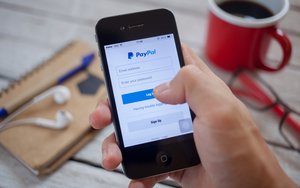Commentary
The 2 Sides Of Mobile Payments: $92 Billion Vs. $296 Billion
- by Chuck Martin , Staff Writer, December 21, 2016
 There are mobile payments and then there are mobile payments.
There are mobile payments and then there are mobile payments.
Put another way, paying by phone can take more than one way.
While in a store, consumers face a number of ways to use their smartphone to pay. These typically would include device-based technology, such as in Apple Pay or Samsung Pay.
Separately, consumers also use their phones to buy things and pay by phone. These could include an online purchase with payment methods such as Pay Pal or credit card.
The complexity comes in consumers understanding what to use and when.
A relative relayed to me a recent payment experience he had while Christmas shopping. He found the gift and when he got to checkout realized he had left his wallet at home.
The store agreed to hold the item while he drove home to get his wallet.
Halfway home, he remembered he had is iPhone, which he had used several times in the past for in-store purchasing. He told me at that moment he wondered if he should go back to the store in hopes that they took Apple Pay.
He smartly continued home to get his wallet, just in case. After he returned to the store and paid for the item by credit card, he asked the clerk if the store took Apple Pay and was told they did not, dodging that mobile payment bullet.
Therein lies a fundamental roadblock for mass adoption of in-store mobile payments. Consumers have no way of knowing when a store can accept whatever payment capability they have in their phone, if they have it at all.
It’s challenging for a mass change in consumer payment behaviors if the experience in the market isn’t consistent and seamless.
Despite all the obvious issues, location-based mobile payments will reach $92 billion within three years, according to a new study by Javelin Strategy and Research.
The study is based on a series of surveys across several random-sample panels comprising more than 10,000 consumers who were representative of the U.S. population.
Despite all the efforts and focus on in-store and other location-based mobile payments, consumers soon will face an onslaught of new ways to pay using a phone.
Hundreds of new payment apps will flood the market within two years, according to Javelin. That flurry of new apps could further confuse consumers struggling to settle in to a convenient mobile payment solution for purchases online, in-app and in-store.
This mobile payments convergence will take place in two waves, with mobile online retail payments first, followed by the consolidation of person-to-person functionality into mobile wallets that currently work primarily in-store, according to the report.
Much like consumers use Amazon’s one-click checkout, consumers ultimately will gravitate to similarly streamlined mobile wallet options to pay for everything everywhere.
While the $92 billion projection of mobile proximity payments is substantial, it is only a fraction of the amount of money that will pass through mobile phones via app and browser payments.
Javelin pegs that number at $161 billion this year climbing to $296 billion in three years.
The flood of new payment apps will come from different entities.
“Banks and card issuers have a unique opportunity to simplify the purchasing experience by offering a single branded wallet solution that brings together mobile payments, money movement functionality and account management capabilities,” said Emmett Higdon, director of mobile at Javelin.
There is no shortage of entities and mobile payment methods. Still to be found is a large mass of consumers being able to use their smartphone to use a simple and repeatable way to pay for things they buy in the course of their day, no matter where they are.




One thing I've several times found missing in the mobile payment scenario is that the mobile app logo or symbol in store windows or at the register is a must--why do some stores have the system but not advertise it? I have both Samsung Pay and Android Pay and find them easy to use. I also like the instant email notification with transaction details which helps me to keep my purchase & banking info organized and up to date. Outside of that environment, I'm a heavy online purchaser but buy almost nothing online which doesn't offer the use of PayPal.
I find it irritating, as technology moves us forward, that so many people aren't interested in knowing how to use the mobile payment or scores of other helpful and well-tested apps. Sorry to say I see this more with older folks. I'm almost 70 and don't know anyone my age--even with smartphones--who knows what "the darned things" are for and express complete contentment in their ignorance. (They use the word "newfangled" a lot.) Now that I think of it, these are largely also people who won't give up their paper newspaper and only want paper bills to pay with paper checks. (Ever hear about the old dog/new trick?)
Very good points, Christina. Until the non-informed learn the benefits, it can be challenging for them to get aboard.